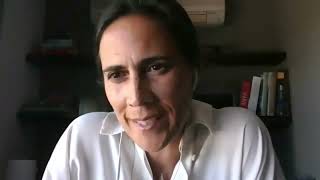GCM Objective 8 - Save lives
GCM Objective 8 - Save lives

Save lives and establish coordinated international efforts on missing migrants
We commit to cooperate internationally to save lives and prevent migrant deaths and injuries through individual or joint search and rescue operations, standardized collection and exchange of relevant information, assuming collective responsibility to preserve the lives of all migrants, in accordance with international law. We further commit to identify those who have died or gone missing, and to facilitate communication with affected families.
To realize this commitment, we will draw from the following actions:
a) Develop procedures and agreements on search and rescue of migrants, with the primary objective to protect migrants’ right to life that uphold the prohibition of collective expulsion, guarantee due process and individual assessments, enhance reception and assistance capacities, and ensure that the provision of assistance of an exclusively humanitarian nature for migrants is not considered unlawful
b) Review the impacts of migration-related policies and laws to ensure that these do not raise or create the risk of migrants going missing, including by identifying dangerous transit routes used by migrants, by working with other States as well as relevant stakeholders and international organizations to identify contextual risks and establishing mechanisms for preventing and responding to such situations, with particular attention to migrant children, especially those unaccompanied or separated
c) Enable migrants to communicate with their families without delay to inform them that they are alive by facilitating access to means of communication along routes and at their destination, including in places of detention, as well as access to consular missions, local authorities and organizations that can provide assistance with family contacts, especially in cases of unaccompanied or separated migrant children, as well as adolescents
d) Establish transnational coordination channels, including through consular cooperation, and designate contact points for families looking for missing migrants, through which families can be kept informed on the status of the search and obtain other relevant information, while respecting the right to privacy and protecting personal data
e) Collect, centralize and systematize data regarding corpses and ensure traceability after burial, in accordance with internationally accepted forensic standards, and establish coordination channels at transnational level to facilitate identification and the provision of information to families
f) Make all efforts, including through international cooperation, to recover, identify and repatriate the remains of deceased migrants to their countries of origin, respecting the wishes of grieving families, and, in the case of unidentified individuals, facilitate the identification and subsequent recovery of the mortal remains, ensuring that the remains of deceased migrants are treated in a dignified, respectful and proper manner.
Thousands of migrants die or go missing worldwide each year, including on irregular migratory routes. More than 75,000 deaths have been documented during migration since 1996 (IOM, 2014; 2020), though this number is likely a vast undercount of the true number of lives lost. The overwhelming majority of these occurred on irregular migration routes, where the natural hazards of remote terrains as well as human-caused risks such as hazardous means of transport and violence have led to many deaths.
Closely related to this crisis of migrant mortality is the difficulty faced by families searching for loved ones lost during migration. While missing migrants may be dead or alive, tracing and identifying migrants reported missing is incredibly challenging in such a transnational context. Families may not know the route their loved ones took, and often do not know whom to contact for help, leaving them susceptible to fraud and blackmail. They may not reach out to official tracing agencies for fear of legal consequences, especially when they or their families are living in irregular circumstances, and if they do file missing persons reports, they are frequently ignored or threatened by authorities. When migrants die, their remains are often not identified because of inadequate resources for coroner offices and DNA identification, lack of desire and interest by governments. Another key challenge to identification is the inability to find any ante-mortem materials on which to base an identification: unless the deceased person carried identification papers, identification depends on information and DNA reference samples from families and friends, which coroners typically do not have. If migrants are alive, they may be unable to reach their families as they lack a phone or the internet. They may also be detained by criminal elements or even governments, without the ability to seek help.
The Global Compact for Migration is available in AR, ZH, EN, FR, RU, ES.
Hub content relevant to "GCM Objective 8 - Save lives"
*References to Kosovo shall be understood to be in the context of United Nations Security Council resolution 1244 (1999).
Newsletter
Subscribe to our newsletter.



